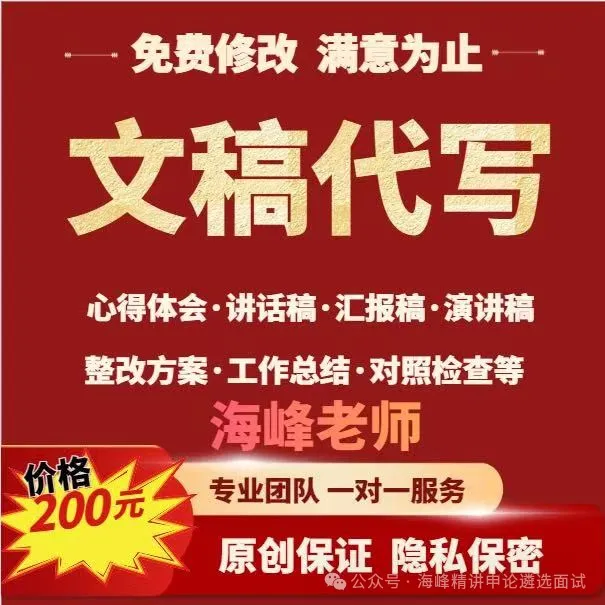2025 Zhejiang Provincial Examination C Paper Real Questions and Reference AnswersC Volume and Reference Answers
Data1
From bustling tourist attractions to vibrant dining establishments, the lively consumption scenes reflect the enormous potential of China’s consumer market.In 2023, the role of consumption as a driving force for economic growth has become more pronounced. According to data from the National Bureau of Statistics, the total retail sales of consumer goods for the year reached 471495 billion yuan, an increase of 7.2%, with final consumption expenditure contributing 4.3 percentage points to economic growth, accounting for 82.5%.
General Secretary Xi Jinping emphasized: “Consumption is increasingly becoming a fundamental force driving economic growth. We must enhance consumption capacity, improve consumption conditions, and innovate consumption scenarios to fully unleash consumption potential.” In recent years, driven by technological empowerment and the upgrading of consumption demand, the tourism economy, first-release economy, and low-altitude economy have flourished, playing an important role in meeting residents’ living needs, releasing consumption potential, and promoting economic recovery.
New quality productivity is characterized by innovation as the leading role, breaking away from traditional economic growth methods and paths of productivity development, featuring high technology, high efficiency, and high quality, aligning with the advanced productive forces of the new development concept. It is essential to organically combine the cultivation and development of new quality productivity with the expansion of new consumption, forming a dynamic balance at a higher level of supply and demand and a virtuous cycle of the national economy, thereby promoting high-quality economic development.
Data2
“This is my first time visiting Hangzhou. Although I have a general idea of my travel plans, I don’t know how to arrange my itinerary or what fun activities are available in Hangzhou. My ‘AI buddy‘ has sorted everything out for me, it’s simply amazing!” The ‘AI buddy’ mentioned by tourist Xiao Qian is a newly launched intelligent cultural tourism entity in Hangzhou, utilizing artificial intelligence, virtual reality, and other new technologies. “Hang Xiaoyi”— a city digital person dressed in a lake green qipao, is enthusiastic and hospitable. She relies on voice recognition and other technologies to analyze and match relevant service scenarios for decision-making, providing tourists with real-time travel strategies, scenic area crowd queries, and AI companionship services, allowing tourists to enjoy a more thoughtful travel experience.
In traditional travel modes, the core services of “strategy, transportation, ticketing, and hotels” are scattered, consuming a lot of tourists’ energy, making some people hesitant to travel. Now, an “AI buddy” can meet various needs during the journey. The combination of AI large models and cultural tourism services makes travel simpler and further drives cultural tourism consumption.
This August, the game “Black Myth: Wukong” ignited the internet, topping global sales charts, selling over 10 million copies in just a few days. The production team of “Black Myth: Wukong” utilized advanced spatial computing and positioning capture technology, scanning real temples, statues, forests, and rocks to create realistic landscape graphics, combined with cutting-edge ray tracing technology to produce lifelike visuals, creating a “Mythical China” that combines traditional Chinese culture with modern gaming technology. “The graphics of this game are incredibly realistic, presenting many real-life attractions before our eyes,” said gamer Xiao Chen. “After playing this game, I really want to visit and check in at these places in person.”
The Yunzhong Dajie Scenic Area in Lishui Jingning She Autonomous County is one of the filming locations for this game. During this National Day holiday, Lishui connected with “Black Myth: Wukong” to launch a series of themed activities for the National Day holiday titled “Jiangnan Secret Realm: Meet Lishui,” using the integration model of “cultural tourism + gaming IP” to boost local popularity, attracting many tourism consumers and providing new possibilities for the deep development of cultural tourism integration. “The collaboration between the Yunzhong Dajie Scenic Area and ‘Black Myth: Wukong’ has been very enlightening for us,” said a local cultural tourism bureau official. “We are also considering how to make our local cultural tourism resources ‘go viral.'”
With the accelerated application of new technologies such as 5G, artificial intelligence, big data, and virtual reality in the cultural tourism field, the digitalization, networking, and intelligent development are bringing new demands and injecting new vitality into the tourism economy, showcasing a vibrant and promising future for high-quality development of the tourism economy.
Data3
“This time, the Mate70 was really hard to grab; I didn’t even react before it was sold out!“
“I watched the review videos, and using the Mate70 for large mobile games is smooth and seamless, not lagging at all. The Kirin 9100 chip is indeed powerful; I have successfully made a reservation!“
On November 26, 2024, Huawei released the latest Mate70 series flagship smartphone, with over 1 million units reserved within the first hour of sales. Industry experts stated: “This is a typical manifestation of the ‘first-release economy,’ which will drive the entire industry forward.”
The first-release economy refers to the total economic activities of enterprises launching new products, new business formats, new models, new services, and new technologies, as well as opening flagship stores. The new trendy products brought by the first-release economy can quickly attract consumers’ attention, satisfying people’s pursuit of novelty and high-quality life, and then spreading through social platforms, bringing sustained traffic and adding new momentum to consumption. The first-release economy is not limited to a single store or link; it encompasses the “chain development” from creative research and development to promotion and operation, as well as the cross-integration of multiple industrial chains.
On March 28, 2024, Xiaomi released its first electric vehicle, the SU7, which broke 10,000 reservations in just 4 minutes, 20,000 in 7 minutes, and 50,000 in 27 minutes. The attention surrounding the Xiaomi SU7, which took three years to develop, is matched by its supply chain. From the power system to chassis components, from thermal management systems to interior and exterior trims, the main components of the Xiaomi SU7 are sourced from domestic suppliers. Public information reveals that over 40 industrial chain enterprises have become partners of Xiaomi’s automotive venture. For example, the battery cells for the SU7 come from CATL and BYD’s Xiangyang Fudi, while the motors are sourced from leading domestic automotive motor companies such as Inovance Technology… The Xiaomi SU7 is just a microcosm of China’s automotive industry climbing to the pinnacle of global industry, alongside BYD, Geely, Changan, Great Wall, and thousands of supply chain enterprises behind them.
“A product, a technology, or a service, the first release behind it represents an update of an industrial chain, with innovation as its core driving force, not only bringing more business opportunities and greater profit margins to enterprises but also promoting industrial transformation and upgrading,” said Researcher Chen from the Consumption and Circulation Research Center of the Zhejiang Academy of Commerce. By promoting consumption upgrades, the first-release economy guides resources such as talent, capital, and technology from low-end industries to strategic emerging industries. In this process, the diverse demands of consumers also raise higher requirements for front-end production, driving enterprises to form new competitive advantages through technological innovation, further promoting industrial innovation to evolve towards mid-to-high-end levels.
Remaining materials: omitted

3. Based on the provided materials, write a discussion article on the topic of “Expanding New Consumption and Developing a Virtuous Cycle of New Quality Productivity” from a self-selected perspective and title. (50points)
Requirements: Clear main idea, complete structure, clear thinking; content rich, profound discussion, fluent language; not limited to the provided materials; word count 1000-1200words.
Reference Sample:
Dual-Engine Drive: The Symbiotic Logic of New Consumption and New Quality Productivity
In the unmanned supermarket in Guangming District, Shenzhen, customers only need to scan their irises to complete payment; in the Wulin business district of Hangzhou, virtual anchors are recommending domestic trendy products to global audiences through holographic projections; on the Tianfu Greenway in Chengdu, hydrogen-powered shared bicycles have become a new choice for young people seeking low-carbon travel… These scenes reflect the profound changes in China’s economic development: new consumption and new quality productivity are reshaping the production and lifestyle of human civilization with a quantum entanglement-like synergy. The two are not merely a simple supply-demand relationship but construct a symbiotic system through continuous energy exchange, spiraling upwards.
New Consumption: The Demand Engine of New Quality Productivity
Shifts in consumption patterns are forcing a reconstruction of the productivity system. When Generation Z prioritizes “experiential value” in their consumption decisions, traditional production logic struggles to adapt to market evolution. The annual growth of smart home device sales by 23% reflects the response of flexible manufacturing systems to personalized customization; the breakthrough of over 40% penetration rate for new energy vehicles stems from solid-state battery technology alleviating range anxiety. This revolutionary change on the demand side essentially forms a “gravitational field effect” for technological innovation.
The flow of market data is even more enlightening. Real-time feedback of consumer behavior data from live e-commerce platforms enables the C2M (Customer-to-Manufacturer) model to accurately capture demand tails. The Haier Kaos industrial internet platform shows that by reverse integrating supply chains through consumer-end data, product development cycles are shortened by 35%, and inventory turnover efficiency is improved by 40%. This cross-domain flow of data elements transforms productivity enhancement from an endogenous behavior of enterprises into a social collaboration project.
New Quality Productivity: The Supply Revolution of New Consumption
Breakthroughs in technological singularities are creating unprecedented consumption landscapes. Quantum computing’s hundredfold increase in drug development efficiency brings gene-customized health products from science fiction to reality; space information technology has spawned “space-bred vegetables,” making urban balcony farming possible. These disruptive innovations not only meet existing demands but also open up new consumption frontiers through an upgraded version of Say’s Law, where supply creates demand.
The reorganization of production factors is even more revolutionary. As data and algorithms become core production materials, traditional industry boundaries begin to dissolve. Shenzhen’s drone delivery network compresses logistics time to 15 minutes, which is essentially a collaborative breakthrough of navigation chips, battery materials, and intelligent scheduling algorithms; Shanghai’s “metaverse business district” sees daily traffic of one million customers, thanks to the integrated innovation of 5G, blockchain, and digital twin technologies. This paradigm shift in factor allocation expands the consumption space from physical domains to a digital-physical fusion space.
Institutional Innovation: The Accelerating Key to a Virtuous Cycle
Building an institutional framework that adapts to the new economic form is key to maintaining the dual-engine drive. Pilot reforms in the market-oriented allocation of data elements show that establishing mechanisms for data rights confirmation, circulation, and trading can enhance the R&D input-output ratio of enterprises by 25%. The “listing and ranking” system in Beijing’s Zhongguancun breaks the boundaries between research institutions and enterprises, shortening the technology conversion cycle of brain-computer interface technology from 10 years to 3 years, which is a leap in productivity released by institutional innovation.
The reconstruction of the global value chain requires higher-dimensional system design. The Suzhou biopharmaceutical industrial park has established an “offshore innovation + local transformation” model, attracting R&D teams from 37 countries and compressing the mRNA vaccine development cycle by 60%; Hainan Free Trade Port’s “consumption return” policy system, through duty-free shopping and medical tourism, has attracted over 300 billion yuan of overseas consumption return within three years. These explorations prove that institutional openness can simultaneously enhance consumption levels and productivity.
Standing at the critical point of digital transformation of human civilization, the interaction between new consumption and new quality productivity has long transcended the economic realm. When Inner Mongolia’s intelligent pastures monitor grass growth through satellite remote sensing, and Dunhuang murals become cultural and creative products through 3D printing technology, we see not only the optimization of supply-demand relationships but also the upgrading of civilizational forms. This spiraling symbiotic relationship is akin to the base pairing of DNA double helix—consumer demand provides directional guidance for the evolution of productivity, while technological innovation builds the real foundation for consumption upgrades. Together, under the polymerase action of institutional innovation, they continuously write the genetic code of Chinese-style modernization.



 Contact Feng Ge
Contact Feng Ge Scan the QR code to follow us
Scan the QR code to follow us
 WeChat: 2796999726Weibo: Haifeng Shenglun Selection @ Sina Weibo
WeChat: 2796999726Weibo: Haifeng Shenglun Selection @ Sina Weibo